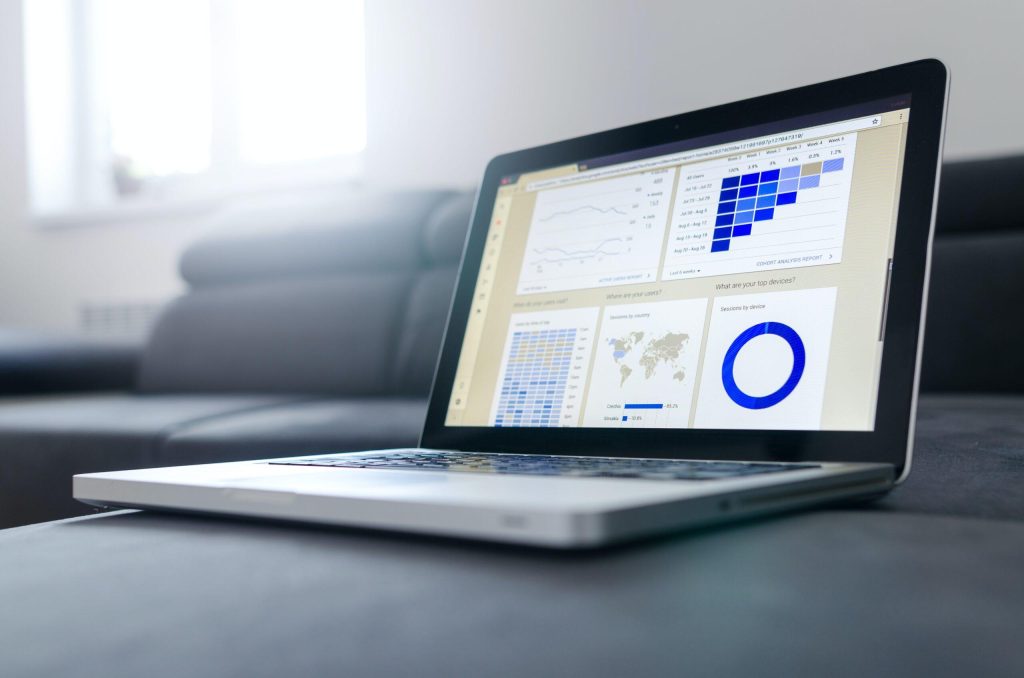
Take It Personally
Why Targeted Marketing Reigns Supreme
In today’s media-heavy world, we’re being inundated with information constantly. Our inboxes are flooded with promotion emails that get deleted upon arrival. How are businesses supposed to reach consumers when everything seems to be saturated? Targeted, personalized ads that fit seamlessly into a consumer’s life.
Over the last five years, personalized ads have become the expectation. Forbes reported how “71% of consumers feel frustrated when a shopping experience is impersonal.” This expectation was only further solidified “when the pandemic forced brands to ditch nearly everything for digital platforms, personalization became an even more dominant force” (Forbes).
Have you ever spent hours combing websites for a specific pair of pants or outfit for an event, only to have a personalized ad show you exactly what you were looking for later that day? Shoppers are busy, and oftentimes need a little help finding the right product for them. Many consumers rely on personal ads to push them in the right direction, with “58% of users [being] more likely to convert when they receive content based on previous behavior” (HubSpot). This is especially true in the apparel space, given that “consumers are most receptive to personalized ads in retail” (Business 2 Community).
The statistics around personalized shopping experiences don’t lie. And while personalization can affect everything from brand awareness to turning buyers into repeat customers, it has an especially strong effect on conversion rates. Read on to find out which factors are most likely to sway consumers.
Sunshine on a Cloudy Day
How Weather Affects Buyer Behavior
We all live in different regions, have different jobs, make different amounts of money, and do different activities in our free time. Personalization should reflect the multitude of experiences within our diverse lives. Therefore, it’s important for businesses to know how personalized offers can be based on external variables specific to their consumers, including their location, what phone they have, how often they shop and where, the weather, etc.
More on that last one. According to a white paper put out by Weather Unlocked, “weather is the second biggest influence on consumer behavior after the state of the economy” and “affects around $3 trillion worth of business” in the US. And “in the UK, they found that just a few degrees rise in temperatures in early spring will produce a 200% lift in BBQ sales”.
This shouldn’t be surprising, and yet, it’s so frequently left out of the personalization conversation. We know weather affects our mood, and it also affects what we wear, where we go, and how we get there. Brands have capitalized on the variation in weather by using a future forecast to convince buyers that they will be able to utilize the product they’re being targeted for. “Forecasts offer an excellent way to legitimize communications with customers whilst providing a value-add…which affirms the consumer’s need for the product or service” (Weather Unlocked). Curious how such an ad impacts product awareness directly? For example, “Neutrogena Beach Defense Sunscreen used in-app ads which were activated by sun and UV levels, increasing purchase intent by 43% and product awareness from zero to 63%” (Weather Unlocked).
It’s also important to consider where a consumer might be when they receive a certain ad, and how that could affect their follow through to purchase.
“Marketers will benefit from understanding which consumer-brand touchpoints work best for different weather-based campaigns. For example – a campaign for a weather-proof jacket triggered by wet and windy weather might be best suited to desktop display advertising – as the consumer is likely to be indoors. Conversely, an ad for a soft drink triggered by hot and sunny weather may be most effectively delivered via mobile or DOOH channels – when the consumer is on the move.”
Weather Unlocked
Weather is just one, albeit an important, factor in determining how to target consumers to further your marketing efforts. Age, location, and previous buying habits also play an important role in determining ad effectiveness. The most crucial component to tailoring ads successfully is in data capture. Wondering how you’ll get the data you need to make your marketing plan the most effective yet? Read on to find out how Vi3 gives you that edge.

Data-Driven Details
The Vi3 edge
Most businesses know that personalization is the key to capturing and converting customers. But “40% of marketers say their biggest challenge with personalization is linking to data-related technologies, while 34% struggle with poor data quality” (Experian). While concerns around data privacy get a lot of airtime, it’s been reported that “83% of shoppers would exchange data for a more personalized experience” despite this (Accenture via HubSpot).
As long as consumers know how and why their data is being used, most don’t mind providing non-identifying data in order to better their own shopping experience. In fact, as we stated earlier, most have come to expect it and not engaging with consumers in a personalized way is actually costing you.
“Invest in accurate, real-time data…60% of consumers say they are likely to become repeat buyers after a personalized shopping experience, and almost half say they are less likely to make a purchase from a brand after an un-personalized experience. The truth is: the choice isn’t whether you should invest or not invest. It’s whether you want to stay in business or not. So, if you aren’t investing in a solid customer data platform, you’re definitely behind.” Forbes
It’s clear that there’s a widespread need for fast, accurate, and secure data management systems. With Vi3’s Consumer Engagement module, you’ll utilize new personalization functionality via QR code technology—capturing live time consumer data that will further impact your marketing strategies. Communicate with your customers and convert them to repeat purchasers by utilizing reliable, live-time data around consumer behavior.
Our module utilizes carbon-neutral blockchain technology to ensure your customers’ data is secure. Having a customer data platform is an investment worth making and will separate you from your competition in today’s competitive market. Contact one of our advisors today for more information.